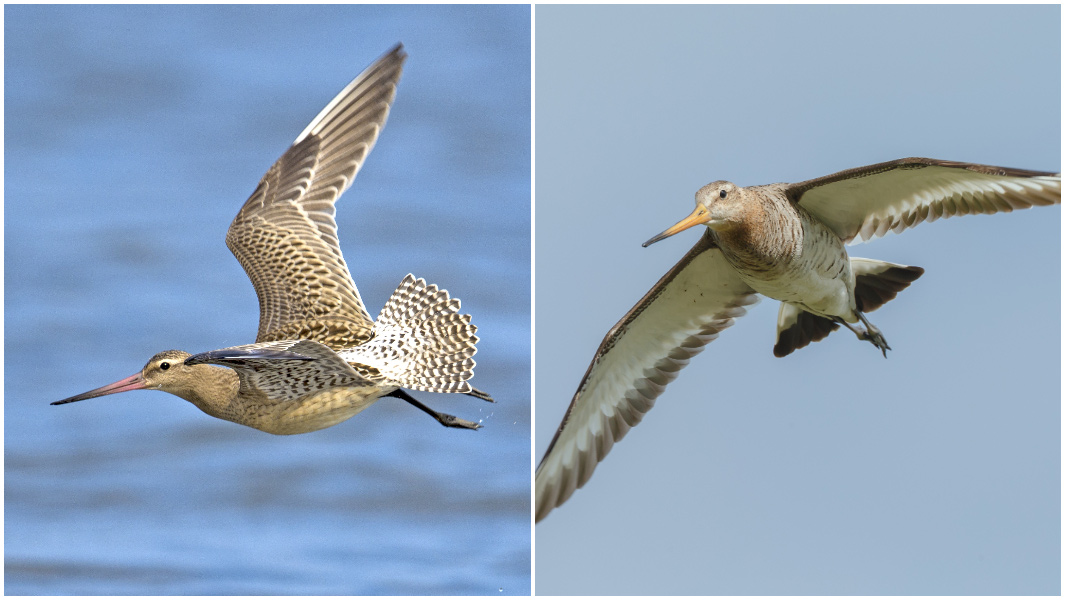The record-breaking bird that flew from Alaska to Australia without stopping

Staring at the sky, have you ever wondered where all the birds fly to?
Very few birds live their entire life in the same location; most of them take wing in order to discover a reliable source of food, to start a family, or to survive the changing seasons.
Whilst some migrations are short, others travel across vast distances. For migrating birds, a missed turn can prove to be fatal because they spend several weeks flying over oceans and continents from one end of the planet to another.
However, in 2022, one juvenile bird successfully earned a place in history with its unexpected turn.
A bar-tailed godwit (Limosa lapponica), known by its tag number “234684”, flew 13,560 kilometres (8,435 miles) from Alaska to the Australian state of Tasmania without stopping for food or rest, breaking the record for the longest non-stop migration by a bird.

The distance covered is equivalent to two and a half trips between London and New York, or approximately one-third of the planet’s full circumference.
According to the 5G satellite tag attached to its lower back, the epic journey started on 13 October 2022 and continued for 11 days and one hour without the bird landing once.
This isn’t the first time that bar-tailed godwits have hit the headlines for their marathon migrations. This five-month-old bird smashed the previous record, set by another of its species in 2020, by over 350 km (217 miles). That godwit in turn had out-flown another that flew for 11,500 kilometres (932 miles) in 2007.
Bar-tailed godwits are not the only long-haul travellers in the bird world. Arctic terns (Sterna paradisaea) can regularly fly even greater distances over the course of a year.
Indeed, factoring in a round journey from their breeding sites north of the Arctic Circle to Antarctica and back, these industrious seabirds might cover as much as 80,000 km (50,000 mi), making theirs the longest bird migration overall. However, the key difference is that they occasionally touch down during their superlative voyages.

Although most birds migrate many miles in search of food and warmth, some have an ability to transform physically to meet environmental conditions.
They can drastically alter their bodies and metabolism by shrinking the size of their internal organs, quickly gaining weight and burning through fat reserves, barely sleeping, and many other superpower-like qualities besides.
Godwits, particularly, make place for energy-rich fats by absorbing 25% of the tissue that forms their digestive tract, liver and kidneys. This is made possible through a biological process known as autophagy (“self-eating”), a mechanism that allows the body to recycle parts of itself as and when required.
Godwits can also make their hearts and chest muscles bigger mid-flight to provide more energy and oxygen to these areas.
These extraordinary skills do have some drawbacks, though. The bodily changes make godwits more susceptible to both natural and human-made hazards because they lack the energy needed to fly long distances.
Our new record-breaking godwit was fortunate to survive its trek across the enormous Pacific Ocean and numerous islands, including New Caledonia and Vanuatu, where it appeared to have passed up the chance to refuel.
Birdlife Tasmania convenor Eric Woehler said the bird probably lost "half or more of its body weight during continuous day and night flight.”
“Short-tailed shearwaters and mutton birds can land on the water and feed. If a godwit lands on water, it’s dead. It doesn’t have the webbing in its feet, it has no way of getting off. So if it falls onto the ocean’s surface from exhaustion, or if bad weather forces it to land, that’s the end.”
Normally, godwits migrate to New Zealand, but this one made a sharp 90-degree turn and landed on the shores of Ansons Bay in eastern Tasmania, Australia.
Dr Woehler summarized that this “wrong turn” increased the previously assumed “flight capacity” of the species, which poses the question: could another godwit in the future fly even farther without stopping?
Experts are hoping that this record flight will highlight the importance of better understanding animal migrations, the navigational strategies employed by these birds, and what can be done to preserve the environments where they do finally stop to feed.
After making such a staggering journey as this, who could deny godwits only the best five-star facilities when they touch down?


